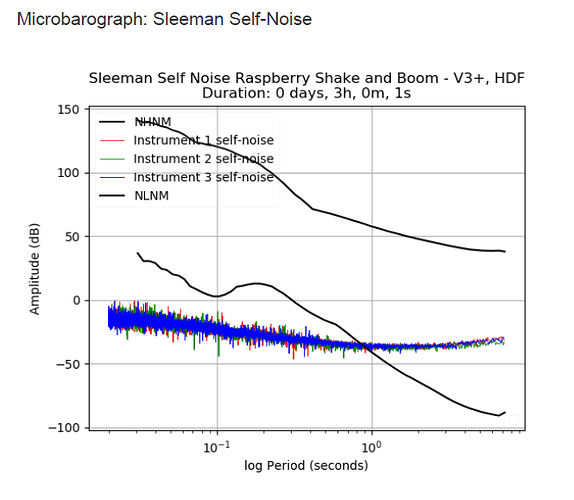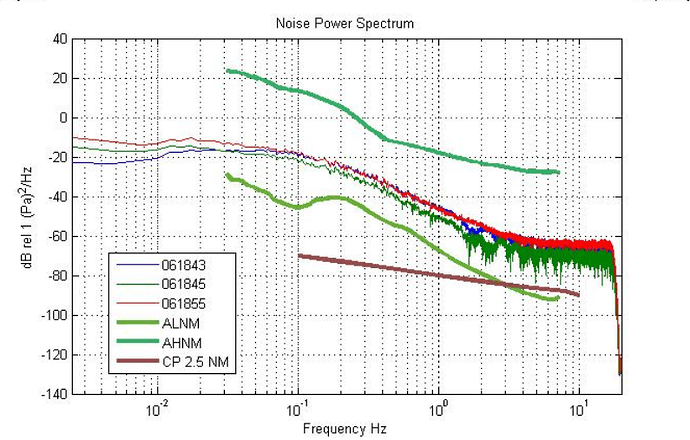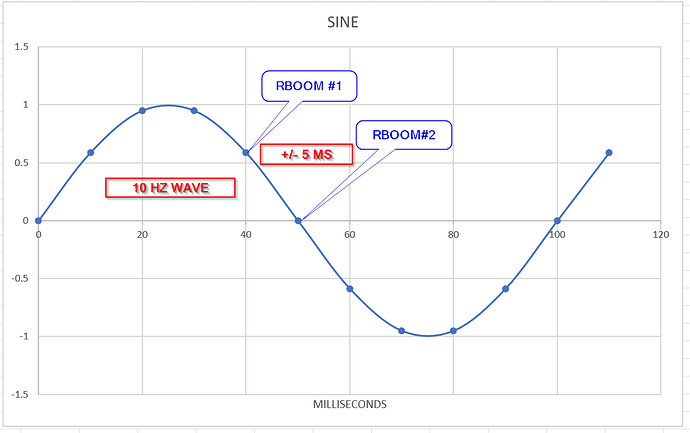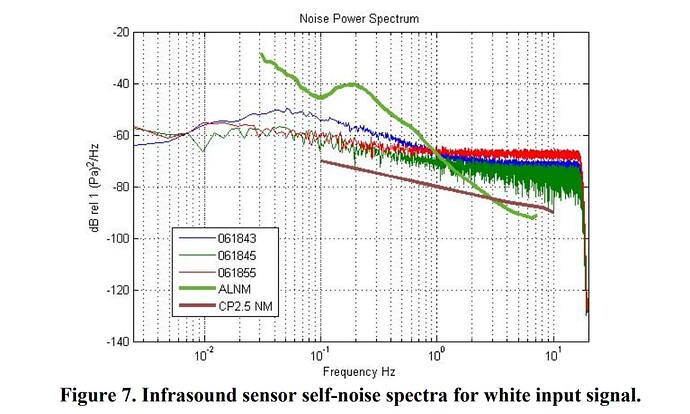I am trying to understand the noise spec a shown on the technical documents page.
This figure:
This is a power spectral density graph if I am not mistaken.
In a PSD graph the amplitude has units of power/Hz. Expressed as dB, you need to state what the zero dB reference is.
Q1: I am guessing that zero dB is 1 dB^2/Hz - can you verify?
Q2 is about the NLNM/NHNM. I could not find the origin of this for acoustic power. I did find a reference to ALNM/AHNM
https://www.ldeo.columbia.edu/res/pi/Monitoring/Doc/Srr_2007/PAPERS/07-03.PDF
I notice in this paper, the curves for the high- and low-noise models are about 50 dB apart at 1 Hz.
In the RBoom spec they are 100 dB apart. This seems improbable. Could there be something wrong with the Y axis ?
So I guess Question 2 is about the Y-axis and the source of those curves.
Lastly - it is noted that the RB low curve includes the digitizer. I understand the Sleeman or “three sensor correlation” technique requires the three instruments to have readings that are highly correlated. I wonder if this assumption is valid when the three RB CPU’s and A/D converters are free-running? To get fully correlated data, I would think you need to synchronize the A/D converters. Any comment?
Thanks



